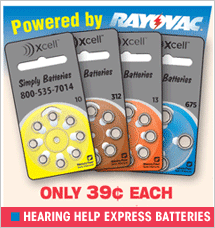
Incandescent. The glow is almost gone. Might this word be removed from online dictionaries as new ones are added?
My sturdy maple childhood desk was a private work space. The bedroom’s overhead fixture certainly was better for school and art work than the crystal chandelier’s gentle radiance in the dining area where I cut out dress patterns. A desk lamp was given to me. I didn’t want it. The fixture, with a single cylindrical bulb concealed beneath a metal and movable shade, gave off a humming sound. Art work colors looked different near a window or by that awful lamp. And my head bothered me. No matter how I complained, this modern item was considered wonderful by others who didn’t have it. Fluorescent. Humming. I stopped pushing the button to turn it on.
Only years later did I learn, in chemistry, that fluorescent emitted a buzzing sound, had a bluish color, and some people got headaches from these bulbs. Vindicated.
Cameras had flash bulbs. The glass got hot in an instant and my fingertips took the brunt when the flash was removed. My parents found a camera with an eject button, believing it would spare my skin.
I toted a real lamp to college, for my dorm desk, but my roommate brought one that hummed and gave off the bluish light. Some classrooms had ceilings with the long tubes. I bent glass, in chemistry, to learn how neon signs were made and wanted to shape the words “only incandescent.”
When my house was built in 1967, from my own plans, I insisted the architect indicate overhead lights in the bedrooms. No matter that I heard old fashioned, 60-watt bulbs beneath a plastic housing were perfect. Eventually, a “natural lighting” glow was being produced, and I inserted these into sockets when a burnt-out had to be replaced. “Natural” didn’t appear that way, and, to my dislike, the coating was a pale blue and reminded me of fluorescent in hue. I almost expected to hear a hum. I had a stack of clear, soft white, in various wattage for all fixtures including candle-shaped for the dining room.
Edison has exited, but not by choice. The government has decreed the demise. Halogen, LED, compact fluorescent, for example, will be the only ones available. The Energy Independence and Security Act (EISA) of 2007 began the process, and January 1, 2014 continues with the “not allowed to manufacture or import” 40- and 60-watt incandescent bulbs. The 75- and 100-watt ones were done in 2012 and 2013.
Do I need to buy rubber gloves to change a halogen in a lamp? Will the squiggles in a CFL fit under a lampshade? Won’t an LED outlive me, and I’ll have to pay a high cost for just the unopened package? I’m a senior! I’m just not used to paying $10 or more for a light bulb guaranteed to continue to shine until my grandchildren are aged. And the patronizing words that the “energy saved will make the cost seem unimportant” was definitely made up by Madison Avenue ad people. The cost is important. The dimmers won’t work with obsolete technology either. And the color has drawbacks as halogen is whiter, CFLs don’t allow for some hues to look familiar, and LEDs might not work with existing dimmers or such.
Long ago, I rebelled when my parents put a metal lamp on my maple desk. I can’t rebel with EISA. Soon, incandescent will be part of my memory of radios with tubes, 78 rpm records, mail without zip codes, penny postcards.... I can currently enjoy digital, or I-pod music, use e-mail or texting by smartphone to communicate, but house lights are a constant. These “new” are not upgrades in technology, but government decrees.
Incandescent. Its current is coming to a close.
Lois Greene Stone, writer and poet, has been syndicated worldwide. Poetry and personal essays have been included in hard & soft-cover book anthologies. Collections of her personal items/ photos/ memorabilia are in major museums including 12 different divisions of The Smithsonian.
- Meet Our Writers
- Go60 Sponsors
- Hear Us Roar
- Sweepstakes Rules
- Sweepstakes Winners
- Contact Us
- Privacy Policy



















